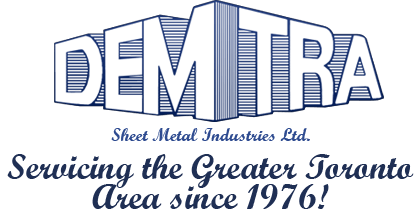Basic Sheet Metal Fabrication Vocabulary
Custom sheet metal fabrication is an essential part of the manufacturing of industrial products. Sheet metal fabrication is an all-encompassing term that describes any process of turning flat sheets of metal into products or metal structures. There are a range of processes that are used in the fabrication process. In today’s blog we’ll focus on 5 methods used in the sheet metal fabrication process. Read on to learn more.
Bending
Bending describes the manufacturing technique that aims to achieve a V, U, or channel-like shape along a straight axis. Box and pan brakes, brake presses, and other specialized machine presses are capable of achieving such results. The workpiece being bent must be able to overcome tensile and compressive stresses to produce the ideal result.
Cutting
Cutting is one of the first methods involved in the custom sheet metal fabrication process. Cutting is what occurs when a workpiece is cut up into smaller sections. Contemporary cutting techniques can rely on the use of laser cutting, waterjet cutting, power scissors, and plasma arc cutting equipment.
Assembling
As its name suggests, assembling describes the process of binding different components, typically with welding, to achieve a uniform crimped seam. Other assembly methods include binding adhesives, riveting, using threaded fasteners, or the use of additional bending to achieve crimped seams.
Galvanizing
Hot-dip galvanizing is essential when it comes to the fabrication of metal workpieces. It effectively serves as a preventative measure against corrosion in fabricated steel products. Hot-dip galvanization is metallurgically bonded to a steel workpiece, whereby the steel workpiece is immersed in molten zinc to achieve a multi-layered zinc-iron coating that protects against corrosion.
Finishing
The process of finishing is one of the last methods involved in custom sheet metal fabrication. Finishing involves the removal of any machining marks, scaling, or pitting found on the surface of the workpiece. Finishing can also involve preparing the surface for subsequent coating processes depending on the application’s needs.





